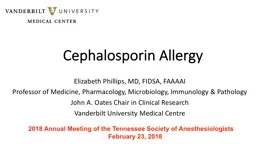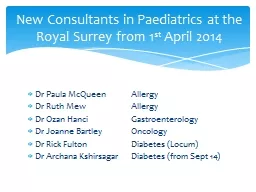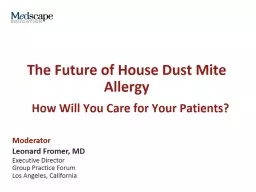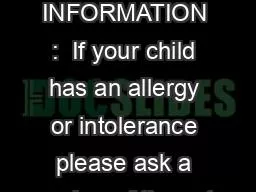PPT-Cephalosporin Allergy Elizabeth Phillips, MD, FIDSA, FAAAAI
Author : RefreshingView | Published Date : 2022-08-04
Professor of Medicine Pharmacology Microbiology Immunology amp Pathology John A Oates Chair in Clinical Research Vanderbilt University Medical Centre 2018 Annual
Presentation Embed Code
Download Presentation
Download Presentation The PPT/PDF document "Cephalosporin Allergy Elizabeth Phillips..." is the property of its rightful owner. Permission is granted to download and print the materials on this website for personal, non-commercial use only, and to display it on your personal computer provided you do not modify the materials and that you retain all copyright notices contained in the materials. By downloading content from our website, you accept the terms of this agreement.
Cephalosporin Allergy Elizabeth Phillips, MD, FIDSA, FAAAAI: Transcript
Download Rules Of Document
"Cephalosporin Allergy Elizabeth Phillips, MD, FIDSA, FAAAAI"The content belongs to its owner. You may download and print it for personal use, without modification, and keep all copyright notices. By downloading, you agree to these terms.
Related Documents














